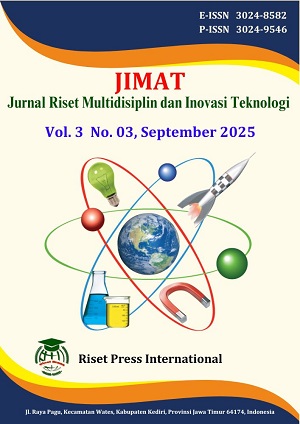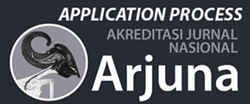Importance of Kaizen Principles for Business Success
DOI:
https://doi.org/10.59653/jimat.v3i03.1906Keywords:
Kaizen, continuous improvement, business success, operational excellence, employee empowerment, waste elimination, organizational cultureAbstract
Kaizen, a Japanese philosophy meaning "continuous improvement," has become a foundational management approach worldwide, underpinning sustainable business success. This article explores the significance of Kaizen principles in diverse organizational settings by analyzing its historical origins, core tenets, and measurable impacts on productivity, waste reduction, employee engagement, and customer satisfaction. Utilizing a comprehensive literature review methodology, this study synthesizes empirical data and case studies across manufacturing, healthcare, and service industries. Findings confirm that organizations embedding Kaizen into their culture achieve superior operational efficiency, innovation capacity, and competitive advantage. The discussion addresses challenges, cultural considerations, and implementation strategies, concluding with evidence-based recommendations to maximize Kaizen's organizational value. This detailed study contributes a vital resource for future research and practical application of continuous improvement methodologies.
Downloads
References
Abdi Kami. (2024). Terapan Etos Kaizen dalam “Meningkatkan Kelas” Bisnis Kuliner BerkeArifan Lokal. Abdi Kami, (3), 2709.
African Scientific Journal. (2024). The impact of Kaizen culture, transformational leadership, and the 4P model on organizational performance and employee commitment.
Agmoni, M. (2016). The Art of Process Improvement: The Kaizen Philosophy. International Journal of Business and Management, 11(2), 134-140.
Antony, J. (2016). Lean Six Sigma for service: How to use Lean Speed and Six Sigma Quality to improve services and transactions. McGraw-Hill Education.
Bakkah. (2025). What is Kaizen? Essential Principles for Continuous Improvement. Retrieved from https://bakkah.net
Berger, A. (1997). Continuous Improvement and Kaizen: Standardization and Organizational Designs. Integrated Manufacturing Systems, 8(2), 110–117.
Bessant, J., & Caffyn, S. (1997). High-involvement innovation through continuous improvement. International Journal of Technology Management, 14(1), 7-28.
Brunet, A. P., & New, S. (2003). Kaizen in Japan: an empirical study. International Journal of Operations & Production Management, 23(12), 1426-1446.
Demirbas, O. O., Blackburn, J. D., & Bennett, D. M. (2019). Sustaining operational excellence through Kaizen: Processes and culture. Journal of Manufacturing Technology Management, 30(5), 909-928.
EBSCO Research Starters. (2025). Kaizen | Brief history. Retrieved March 3, 2025, from https://www.ebsco.com/research-starters/history/kaizen
Eiji Deming Medal information: American experts including W. Edwards Deming were recognized for pioneering Kaizen and continuous improvement in Japan.
Fabriq. (2024). Know Your Customer: The First Principle of Kaizen. Retrieved from https://fabriq.sg
GGGlobal. (2024). Understanding the Kaizen Principle: A Quick Overview. (https://ggglobal.co.uk/blog/understanding-the-kaizen-principle-a-quick-overview/ ).
Ijett Journal. (2023). Implementation of Integrated PDCA-Kaizen in the Plastic Converting Machinery Manufacturing Industry. International Journal of Engineering Trends and Technology, 71(11), 212. https://ijettjournal.org/archive/ijett-v71i11p212
IJFMR. (2023). Analysis of Barriers of Lean Approach Implementation in Manufacturing Industries.
Imai, M. (1986). Kaizen: The key to Japan’s competitive success. McGraw-Hill.
Investopedia. (2025). Kaizen: Understanding the Japanese Business Philosophy. Retrieved from https://www.investopedia.com/terms/k/kaizen.asp
Kaizen Hub. (2025). Employee Development & Engagement.
Kaizen Institute. (2024). Kaizen Principles and Essential Reliability. Retrieved from https://kaizen.com
Kaizen Philosophy in a Modern-Day Business. (2011). Istanbul University Publication.
Kaizen.com.sg. (n.d.). Kaizen History. Retrieved from https://www.kaizen.com.sg/kaizen-history/
Kaizen-news.com. (n.d.). The History and Origins of Kaizen: A Japanese Business Philosophy. Retrieved from https://www.kaizen-news.com/the-history-and-origins-of-kaizen-a-japanese-business-philosophy/
LeanScape. (2025). Kaizen: Mastering Continuous Improvement in Business. Retrieved from https://leanscape.com
Liker, J. K. (2004). The Toyota way: 14 management principles from the world’s greatest manufacturer. McGraw-Hill.
Liker, J. K., & Meier, D. (2006). The Toyota way fieldbook: A practical guide for implementing Toyota’s 4Ps. McGraw-Hill.
Lopez-Gamero, M. D., Claver-Cortes, E., Molina-Azorín, J. F., & Pereira-Moliner, J. (2020). Environmental practices and organizational context: a study of Spanish companies. Business Strategy and the Environment, 29(1), 41-54.
Magyar, G., Török, Á., Dankó, D., & Vincze, Z. (2021). Evolution and challenges of kaizen management in a Central European manufacturing cluster. Engineering Management Journal. https://doi.org/10.1080/10429247.2021.1901813
Manea, L., & Virlanuta, F.-O. (2021). Implementation of Kaizen principles to improve quality and safety in healthcare. Quality Management in Health Care, 30(1), 35–41. https://doi.org/10.1097/QMH.0000000000000298
Martichenko, R. (2004). Lean Six Sigma Deployment and Sustainability. Productivity Press.
Mbsedu.co.uk. (2021, September 6). The History of Kaizen and Its Effect in the Real World. Retrieved from https://www.mbsedu.co.uk/the-history-of-kaizen-and-its-effect-in-the-real-world/
Orcalean. (2025). Overcoming Kaizen Resistance: Proven Strategies for Leaders.
PMC. (2022). A Practical Guide to the Kaizen Approach as a Quality Improvement Tool. PMC, 2022. https://www.ncbi.nlm.nih.gov/pmc/articles/PMC10229000/
Porto Velho Study. (2017). Innovating hospital service with focus on Kaizen method: Case study in a diagnostic imaging sector. Journal of Science and Technology. https://dergipark.org.tr/en/doi/10.18769/ijasos.366847
ProjectManager.com. (2025). Kaizen Method: Definition, Principles and Implementation. Retrieved from https://projectmanager.com
Reverscore. (2025). Role of Leadership in Implementing Kaizen.
Sciendo. (2017). Kaizen Award in Romania: the KAIZEN™ way in obtaining the continuous improvement success.
Sciendo. (2022). Internal Logistics Process Improvement Using PDCA: A Case Study in the Automotive Sector. Business Systems Research Journal, 2022. https://sciendo.com/article/10.2478/bsrj-2022-0027
Shah, R., & Ward, P. T. (2007). Defining and developing measures of lean production. Journal of Operations Management, 25(4), 785–805. https://doi.org/10.1016/j.jom.2007.01.019
Singh, R., et al. (2018). Lean-Kaizen application in small-scale enterprises: An Indian case study. International Journal of Productivity and Performance Management, 67(6), 1040-1058.
Teachfloor. (2025). Kaizen Training: Insights into Its Definition, Advantages, and Implementation.
The Lean Way. (n.d.). Using the PDCA Cycle to Support Continuous Improvement (Kaizen). Retrieved from https://theleanway.net/the-continuous-improvement-cycle-pdca
TQM Journal. (2025). Siklus TQM dalam Pendidikan: Planning, Do, Check, Act dan Prinsip Kaizen pada TQM. Manajerial, 2025.
Universal Class. (2025). Adopting PDCA Cycle in Kaizen. Retrieved from https://www.universalclass.com/articles/business/adopting-pdca-cycle-in-kaizen.htm
Downloads
Published
How to Cite
Issue
Section
Categories
License
Copyright (c) 2025 Belal Dahiam Saif Ghaleb

This work is licensed under a Creative Commons Attribution-ShareAlike 4.0 International License.
Authors who publish with this journal agree to the following terms:
- Authors retain copyright and grant the journal right of first publication with the work simultaneously licensed under a Creative Commons Attribution-ShareAlike that allows others to share the work with an acknowledgement of the work's authorship and initial publication in this journal.
- Authors are able to enter into separate, additional contractual arrangements for the non-exclusive distribution of the journal's published version of the work (e.g., post it to an institutional repository or publish it in a book), with an acknowledgement of its initial publication in this journal.
- Authors are permitted and encouraged to post their work online (e.g., in institutional repositories or on their website) prior to and during the submission process, as it can lead to productive exchanges, as well as earlier and greater citation of published work (See The Effect of Open Access).























